Interested in the idea of selling internationally on Shopify? Shopify Markets is one of the most powerful features you must not miss out!
But what is Shopify Markets, and is it for everyone? If these questions are bothering you, you’ve come to the right resource! In this article, LitExtension – #1 eCommerce Migration Service will address all your concerns about Shopify Markets by delving into:
- A glance at Shopify Markets;
- All feature breakdown;
- The differences between Shopify Markets vs Shopify Markets Pro.
Let’s dive right in!
An Overview Of Shopify Markets
What is Shopify Markets?
Shopify Markets is a suite of localization features that helps you manage and grow your international eCommerce business directly within your Shopify admin. This ‘suite’ includes tools like currency conversion, language localization, market-specific pricing, etc.
With Shopify Markets, you can easily expand your reach to new global markets without the complexity of managing multiple stores separately. Plus, you don’t have to deal with the intricacies of international commerce regulations and tax compliance.
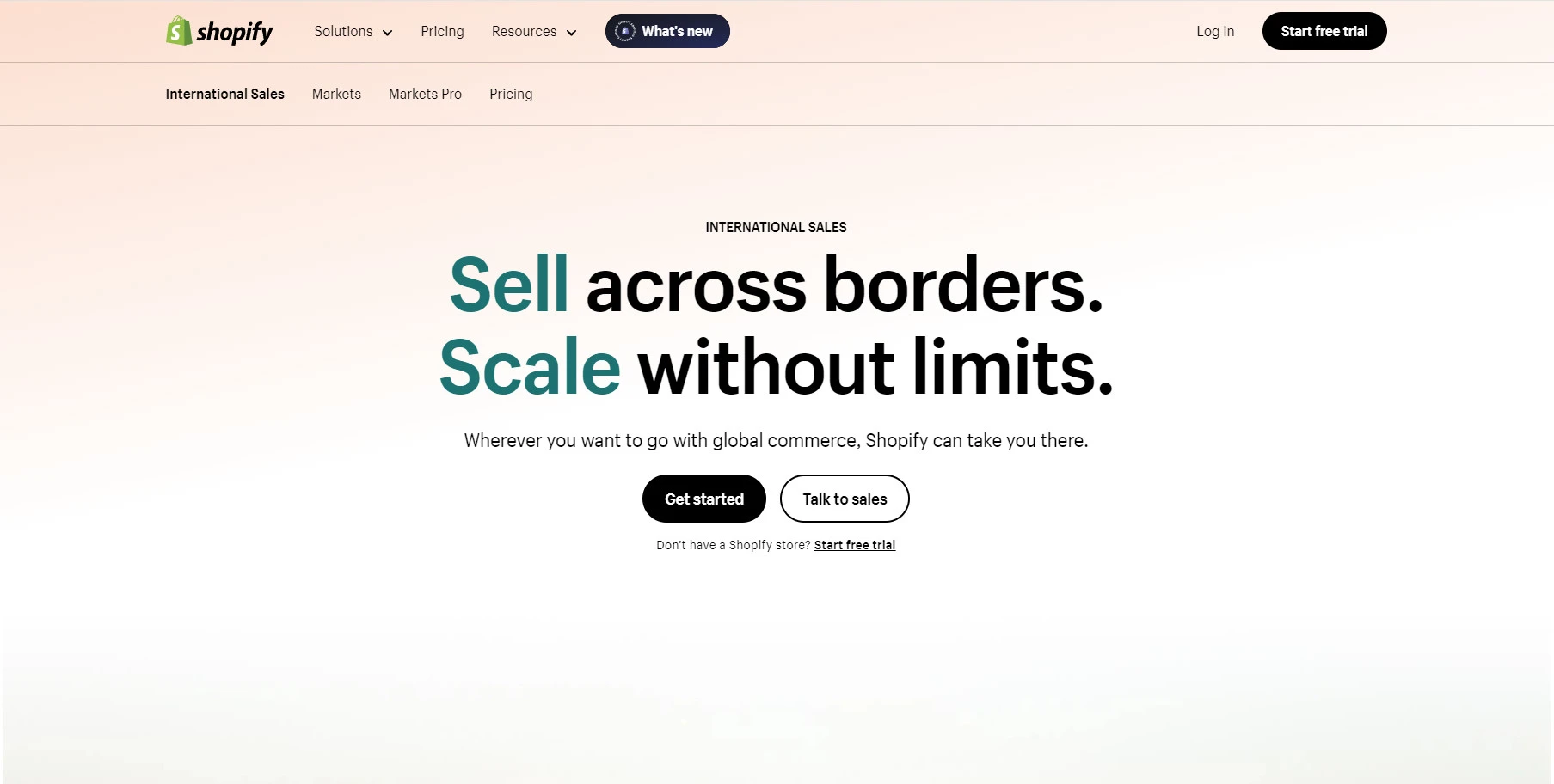
Shopify Markets pros and cons
Shopify Markets is a one-of-a-kind feature that Shopify has ever released. Nevertheless, from our observation, there are still some setbacks.
Below is a summary of pros and cons we wrapped up for you:
[wptb id=71283]
All The Highlight Features Of Shopify Markets
Now that you better understand this suite, let’s see what Shopify International has to offer!
#1. Allow checkout in local currencies
By integrating with Shopify Payments, Markets automatically converts your store’s prices into 130+ currencies with real-time exchange rates. It also adjusts these prices to have uniform ending numbers throughout your localized storefront.
With Shopify Markets, you can deliver global shoppers a seamless multi-currency shopping experience every step of the way – from browsing and checkout to notifications and refunds. This allows international shoppers to shop confidently on your site.
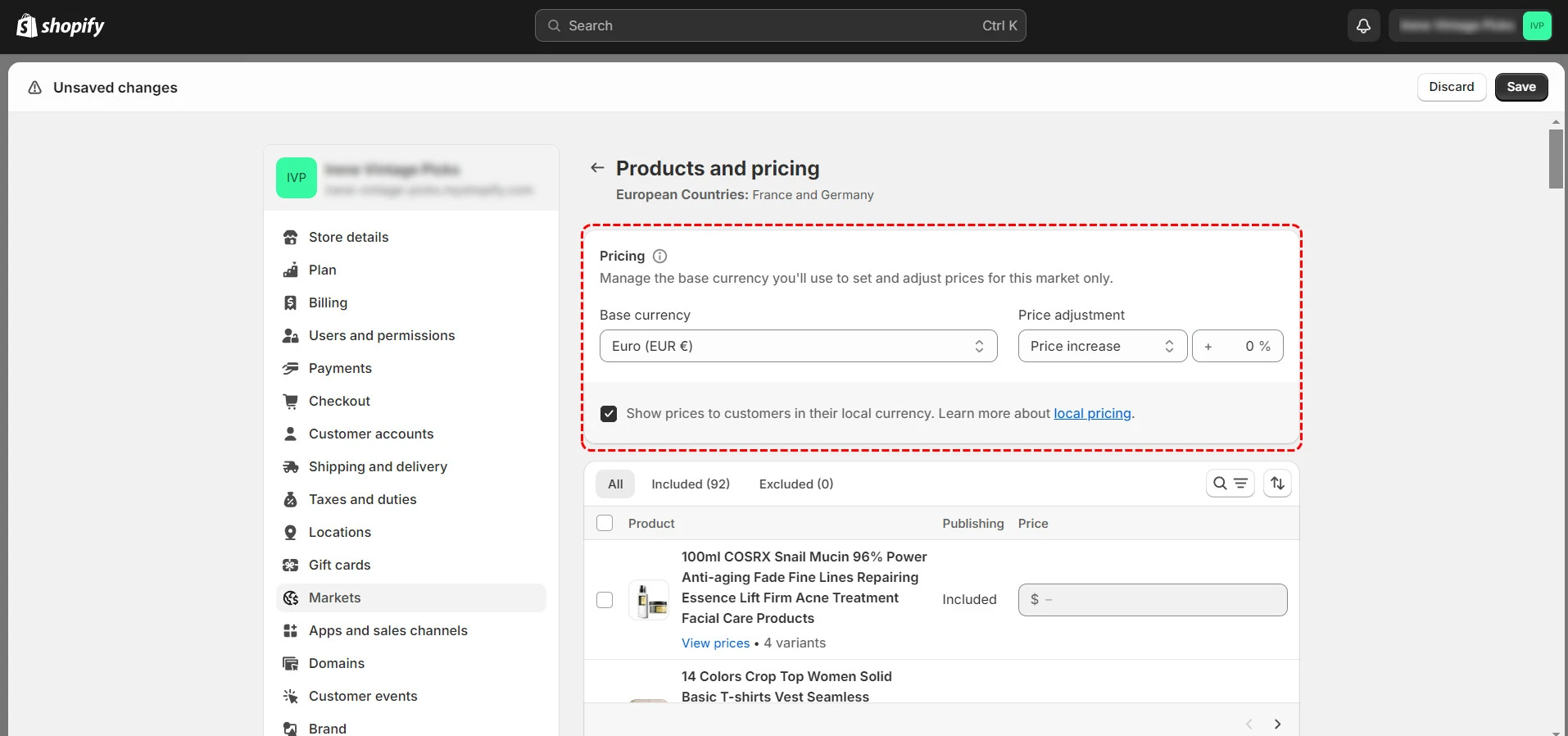
#2. Empower customers to shop in their local languages
Did you know 76% of people like to buy things that have information in their own language? (Source: CSA Research)
Therefore, if you want to move your store globally, localizing your store languages is a must-do task. Fortunately, with the help of a translation app like Transcy, you can translate your store into 168+ languages and manage your translations for all markets with ease.
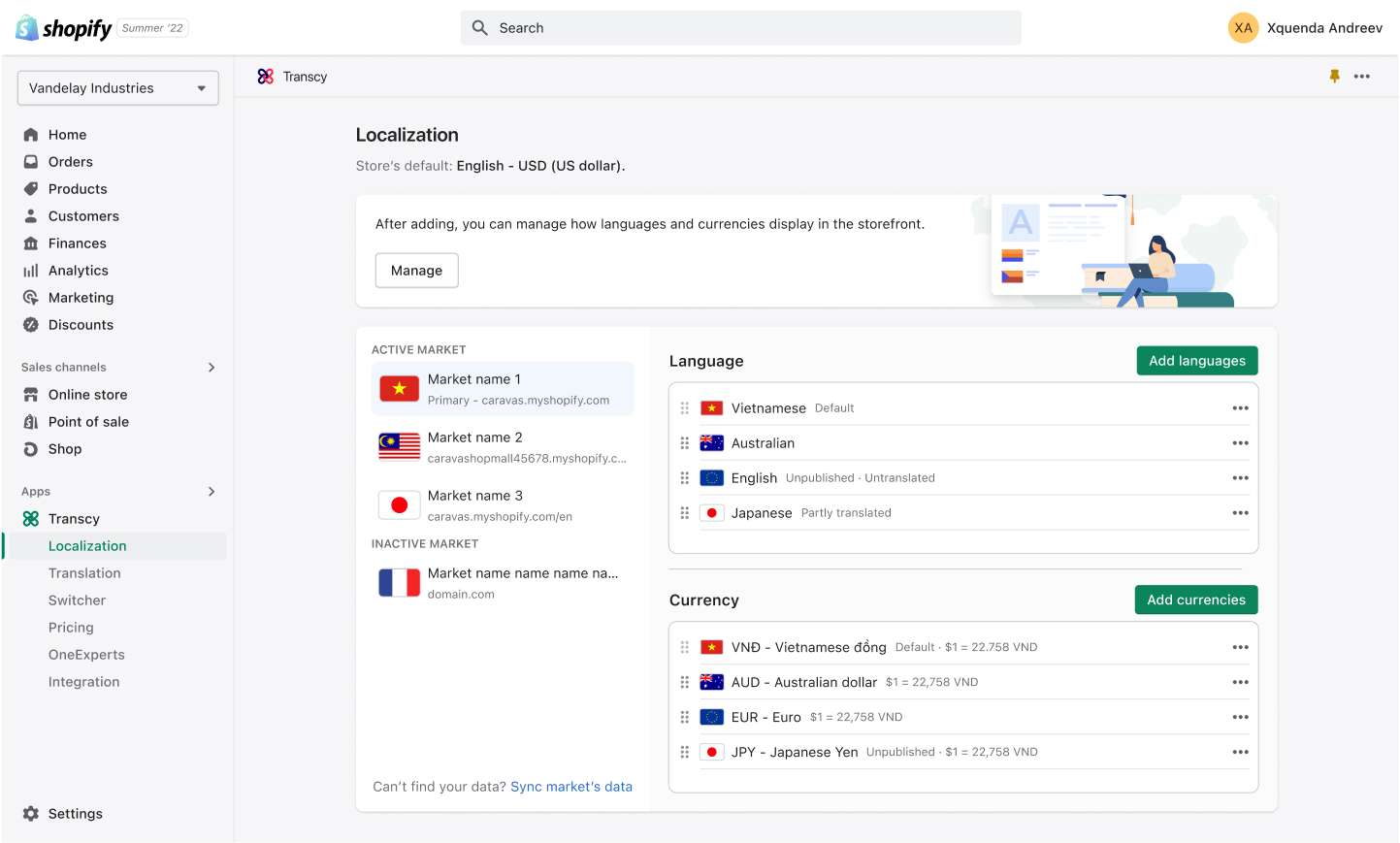
#3. Offer local payment methods
While credit cards offer a familiar payment option, catering to local preferences is crucial for a seamless international shopping experience. For example, here are some preferred payment methods in some specific regions:
- Europe: 80% prefer digital wallets like PayPal or Alipay;
- Netherlands: Bank transfers reign supreme;
- Latin America: Cash-based options like Boleto Bancário (Brazil) are common.
With Shopify Markets, you can not only enable customers to shop in their local currencies but also check out in their preferred payment method.
Specifically, Markets auto-incorporates the most popular payment method of a specific country or region into your checkout process. For instance, if your European market is exclusively set up for Belgium, Bancontact will be offered as a payment option.
#4. Adjust pricing for different markets
One of the standout features of Shopify Markets is the ability to adjust pricing for different international markets directly from your Shopify admin. This feature allows for strategic pricing adjustments to better align with local market conditions.
For example, if you’re selling a line of eco-friendly water bottles, you might price them at $30 in the U.S. market. However, for your market in Europe, considering higher VAT rates and the cost of shipping, you might want to adjust the price to $40 to maintain your profit margin.
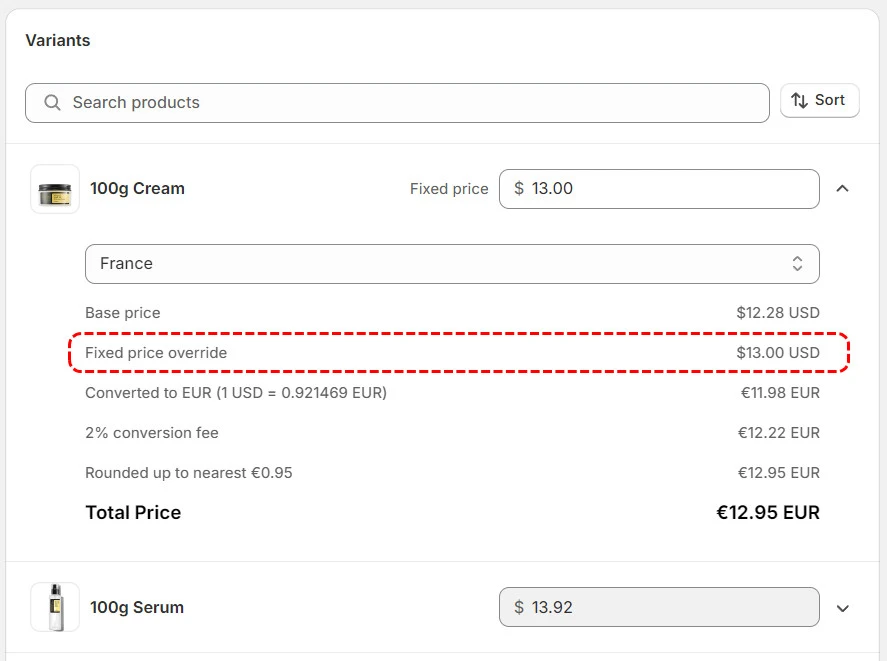
#5. Leverage country-specific subdomain
Shopify Markets simplifies the process of creating a domain for a specific region by automatically generating subfolders for each new market you set up.
For instance, your main store could be myshop.com, while a version of your store specifically for France could be found at myshop.com/fr. Alternatively, you can use a subdomain (like fr.myshop.com) or a country code top-level domain (such as myshop.fr), depending on what suits your needs best.
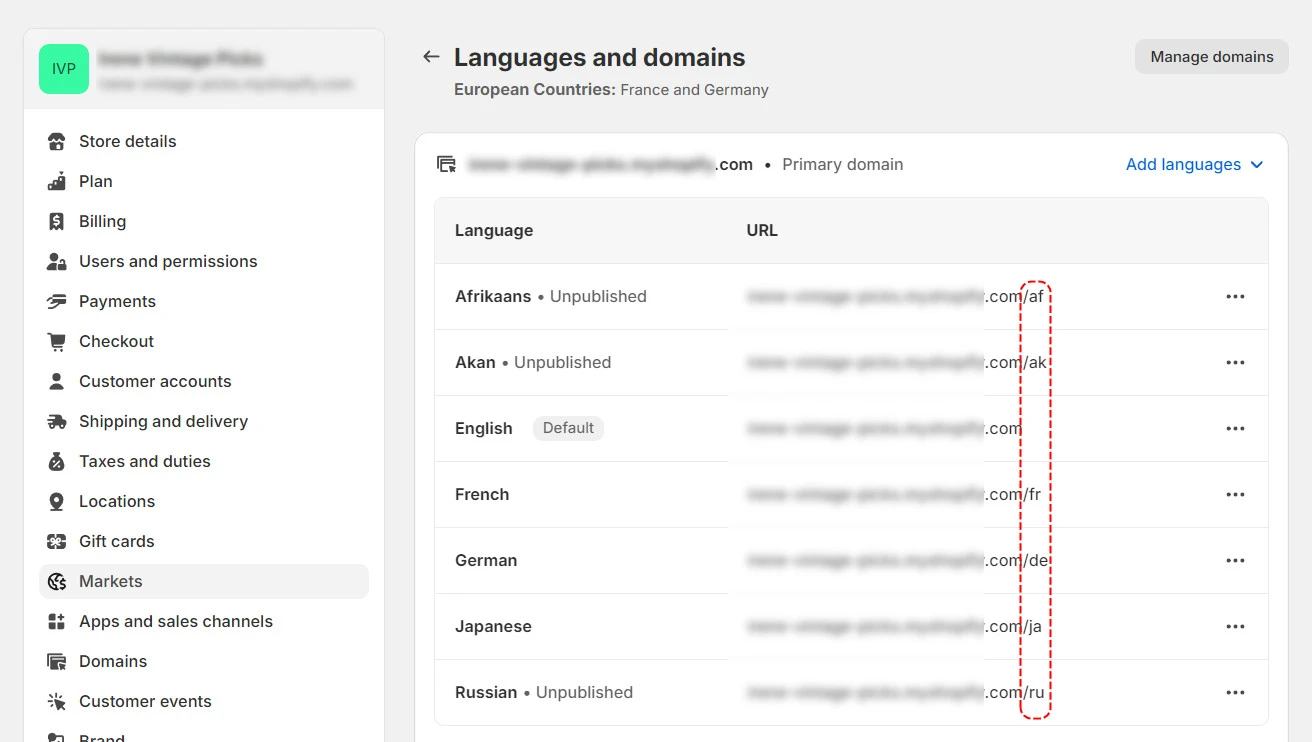
No matter which option you choose, Shopify Markets sets the appropriate SEO tags to ensure that your international customers find the correct domain when they search online.
The awesome part is that when a visitor visits your store, Shopify Markets will auto-detect their geolocation and show them the right domain.
#6. Automatically calculate and collect duties directly at checkout
When selling internationally, your customers might be unsure whether they’ll need to pay extra duties or import taxes on their purchases. This uncertainty can lead to a disappointing shopping experience, with some customers refusing their parcels or even initiating chargebacks.
Therefore, addressing duties and import taxes is crucial for a successful international sales strategy. This is where Markets’ Duties and Import Taxes features come in handy, which allows you to:
- Ensure total cost transparency for international shoppers: By providing estimates for duties and import taxes at checkout, you give your customers a clear understanding of the total cost.
- Minimize the likelihood of parcel refusals and chargebacks: With upfront estimates of duties and import taxes, you can collect these fees right when your customer checks out.
- Simplify the management of duties and taxes across different regions and products: Shopify Markets automates this process with a Duties & Import Taxes calculator, saving effort and ensuring accuracy as rates change.
Shopify Markets vs Shopify Markets Pro
This blog would be incomplete without discussing Shopify Markets Pro – an upgraded version of Shopify Markets that Shopify launched in March 2022.
What is Shopify Markets Pro & how much does it cost?
Shopify Markets Pro builds on the features available in the standard Shopify Markets.
To be more specific, Markets Pro provides you with enhanced capabilities for global selling, such as improved localization options, advanced currency and payment features, and more detailed control over international shipping and taxes.
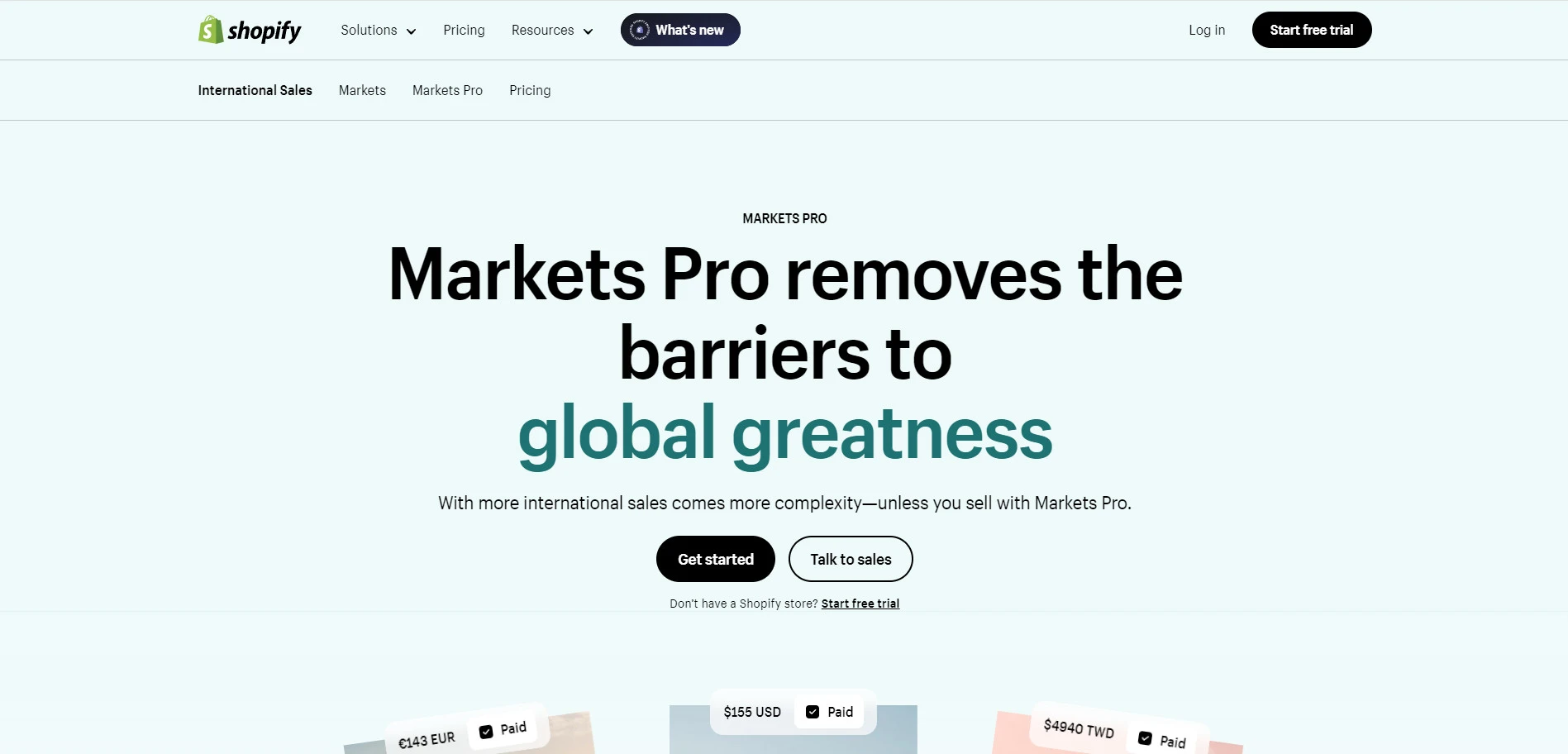
Like Markets, Markets Pro doesn’t charge you a monthly fee. However, for international orders, Markets Pro incurs the following charges:
- A transaction fee of 6.5%, which covers the payment processing cost.
- A currency conversion fee of 2.5% is also referred to as the FX fee.
Who is eligible for Shopify Markets Pro?
Unlike Shopify Markets which are accessible for merchants worldwide, Markets Pro is only available for stores in the Continental United States that do B2C selling.
The exclusive features of Shopify Markets Pro
Selling internationally introduces several challenges, including navigating shipping, taxes, duties, and product restrictions based on the destination country. Markets Pro simplifies these aspects for you, offering several benefits:
- Compliance and product restrictions: Markets Pro adheres to local laws and regulations, restricting certain products where necessary. It also handles the creation and submission of commercial invoices.
- Currency conversion guarantee for refunds: Refunds are processed at the original transaction’s currency conversion rate if made within 30 days, protecting against fluctuations.
- Fixed duty and taxes at checkout: The duty and tax amounts shown during checkout are guaranteed, with Markets Pro covering any discrepancies with customs charges.
- Local tax filing: Markets Pro manages tax filing in various locales for your orders.
- Fraud management and chargeback protection: Orders are automatically screened for fraud, with protection provided against chargebacks, although some exceptions apply.
- Customer address validation: Validates customer addresses during checkout to ensure accuracy.
Frequently Asked Questions
[sp_easyaccordion id=”71282″]
Ready To Globalize Your Store With Shopify Markets?
In brief, Shopify Markets has all you need to build a truly unique local shopping experience that keeps your customers coming back for more. We hope after reading this article, you can know how to make the best use of Shopify Markets for your global expansion
Don’t forget to check out LitExtension’s blog and join our active Facebook Community for all things eCommerce.